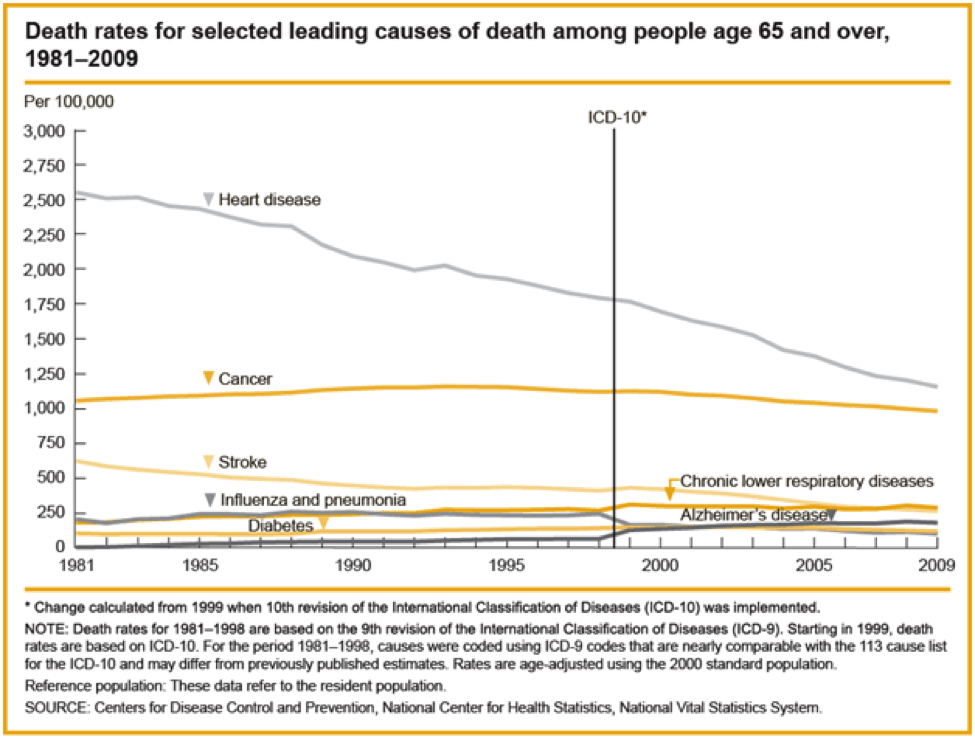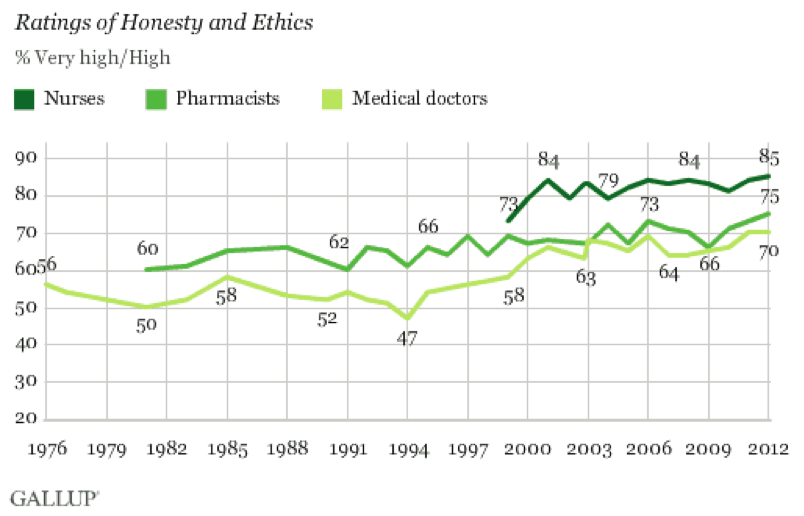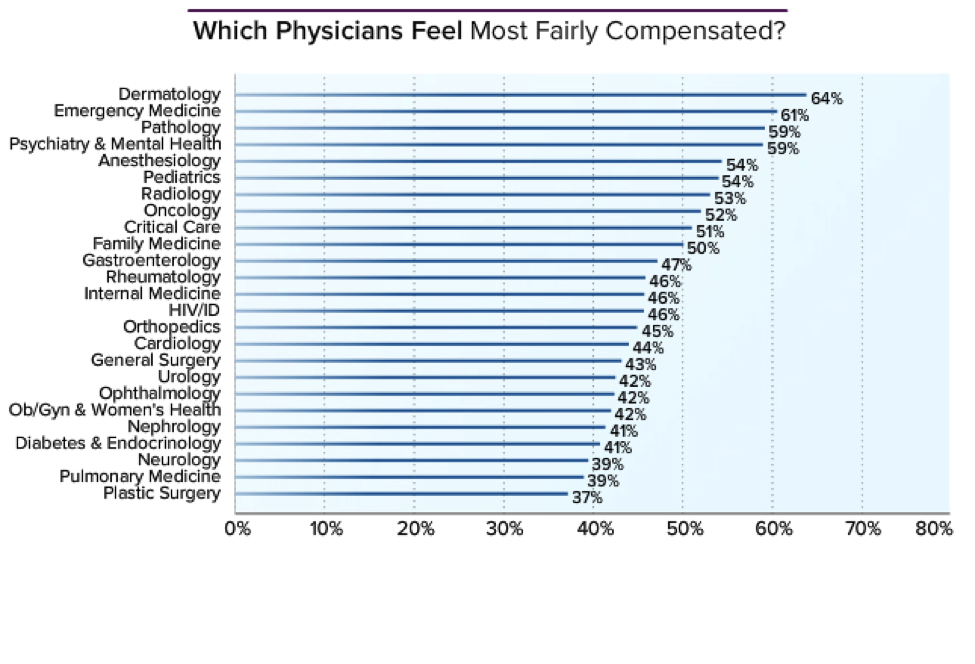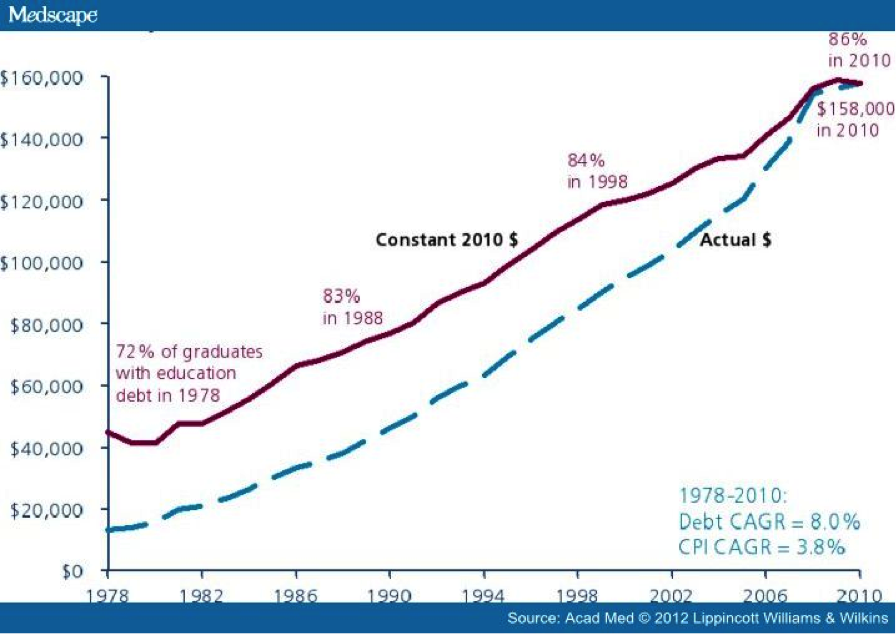Why Doctors Shouldn’t Be Sick of Their Profession
Last week the Wall Street Journal ran an essay titled “Why Doctors Are Sick of Their Profession.” It was authored by the cardiologist Sandeep Jauhar and based on is his book, Doctored: The Disillusionment of an American Physician. Numerous friends and colleagues have e-mailed me links to the piece for feedback and discussion.
The Highlights of the Essay
- Loss of respect and status since the golden age of American Medicine that Dr. Jauhar says occurred from 1940-1970. This era was also marked by rising life expectancy and the “conquest” of many diseases (at least in the developed world).
- Stagnant incomes and high med-school debt.
- Loss of autonomy, too much bureaucracy, burnout and the replacement of the simple private practice model with all sorts of other arrangements which are all linked.
- He also mentions that the loss of morale is happening in spite of ongoing progress against many diseases. Deaths from heart disease and stroke for example have gone way down, and life expectancy continues to rise.
What Does the Data Say?
Below are three charts and a summary from a recent research article that touch on some of the issues raised by Dr. Jauhar.
1) Respect: = The chart below shows some Gallup Poll data from 2012 demonstrating that respect for physicians seems to have risen over the last 35 or so years. Our colleagues in Nursing and Pharmacy do even better.
2) Income: The next chart shows that many physicians feel fairly compensated (the average is about 50%), and there does not seem to be a correlation between satisfaction. The chart comes from a comprehensive 2014 assessment via Medscape.com.
3) Debt: Anyway you slice things the med-school debt picture is bad and the trend lines are not good.
4) Burnout: Physician burnout does appear to be a problem compared to the general population.
“Results: Of 27 276 physicians who received an invitation to participate, 7288 (26.7%) completed surveys. When assessed using the Maslach Burnout Inventory, 45.8% of physicians reported at least 1 symptom of burnout. Substantial differences in burnout were observed by specialty, with the highest rates among physicians at the front line of care access (family medicine, general internal medicine, and emergency medicine). Compared with a probability-based sample of 3442 working US adults, physicians were more likely to have symptoms of burnout (37.9% vs 27.8%) and to be dissatisfied with work-life balance (40.2% vs 23.2%) Highest level of education completed also related to burnout in a pooled multivariate analysis adjusted for age, sex, relationship status, and hours worked per week. Compared with high school graduates, individuals with an MD or DO degree were at increased risk for burnout (odds ratio [OR], 1.36; P < .001), whereas individuals with a bachelor’s degree (OR, 0.80; P = .048), master’s degree (OR, 0.71; P = .01), or professional or doctoral degree other than an MD or DO degree (OR, 0.64; P = .04) were at lower risk for burnout.
Conclusions: Burnout is more common among physicians than among other US workers. Physicians in specialties at the front line of care access seem to be at greatest risk.”
My Take:
The issues above are very complex and they also vary by things like physician specialty, age, gender, and type of practice. However, I would offer the following general observations:
- In contrast to Dr. Jahaur’s assertion, respect for physicians has increased over the years.
- Medicine has never had more to offer patients. The recent reports of exciting new drugs for heart failure and high cholesterol are examples of the ongoing lifesaving innovation that happens all the time. Many operations that were once associated with high blood loss and blood transfusions are now bloodless. Importantly, there have been and are ongoing advances in almost every area of medicine including public health. Questions about how to deliver care fairly and effectively at a reasonable cost are major challenges, but I would rather be dealing with logistical questions than questions of basic efficacy. Dr. Jahaur could easily have painted a more optimistic picture and his essay only tells part of the story.
- The income data in Dr. Jahaur’s article is subject to all sorts of debate as the link associated with the income chart covers many of the nuances. Again Dr. Jahaur could easily have painted a more optimistic picture and his essay only tells part of the story.
- The Debt issue is a real problem and I see it influencing career choices of the med-students and young physicians I work with. If we want more generalist and primary care physicians it needs to be addressed. Fortunately, there are a number of ideas out there that might be explored to address this challenge.
- When I started med-school in 1982 people were just starting to talk about morale, work life balance, and burnout. Additionally, if you actually talk to people who practiced in the 1950s and 60s, they were perpetually on call, worked sometimes foolish hours, and had little back up. More importantly they will all tell you that in retrospect that they had little to offer patients. Most have more than one personal horror story about a terrible outcome that just would not happen today. Most would tell you it was not exactly the good old days. As is the case with debt there are solutions to things like the paper work and clerical burden leading to burnout. Additionally, with a little creativity it should be possible to keep the compliance burden under control with smart regulations. This would free up time for patients, ongoing learning, and other activities that might lead to increased professional satisfaction.
Summary
On the whole Medicine has never been better and the challenges confronting physicians are not insurmountable and many solutions have been adopted in various practices and are on the table elsewhere. As I pointed out several times above, Dr. Jahaur could easily have painted a more optimistic picture and his essay only tells part of the story. Finally, the information above clearly shows that many of his assertions are not backed by the data. Those that are can be fixed. I have seen vast progress in the last 32 years and hope I can see at least 32 more years of progress. Things are only getting better.
This entry was posted on Tuesday, September 2nd, 2014 at 4:13 am and is filed under Current Events. You can follow any responses to this entry through the RSS 2.0 feed. You can leave a response, or trackback from your own site.





